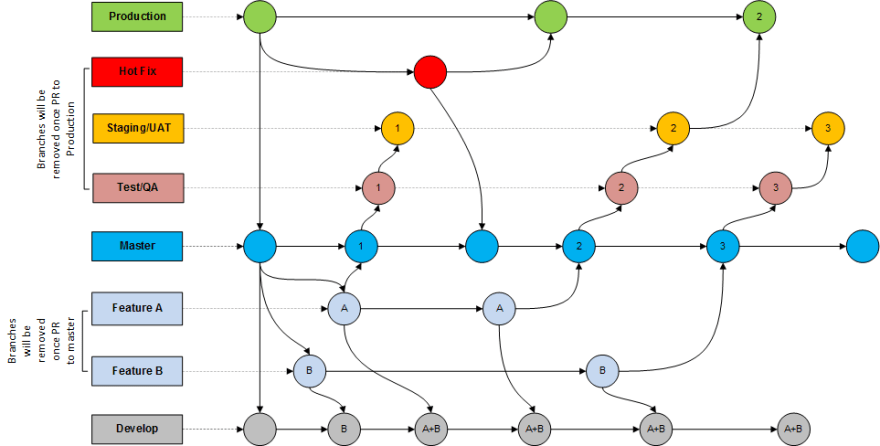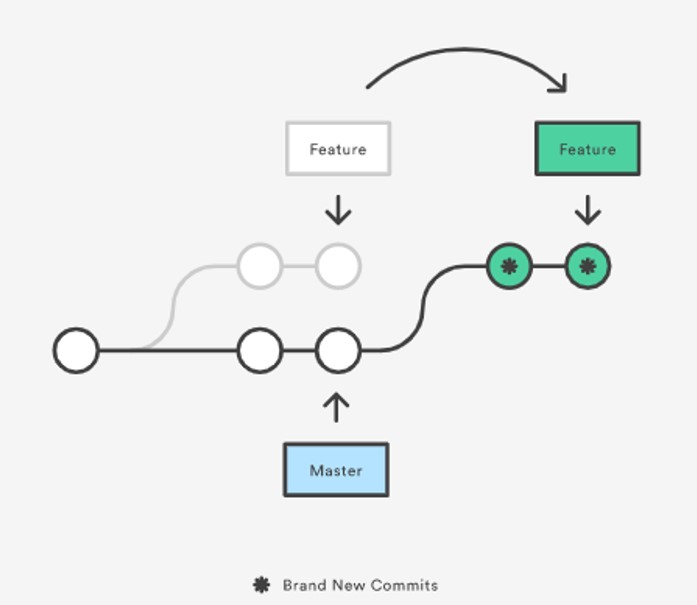

The local copy of your project is considered your local repository. Warning: this will delete any changes you have made since you last pushed to master. If you ever lose your head finding where HEAD is, you can always git reset -hard origin/master to delete changes and get back to a known state.

If there is no commit history connecting your current commit to the commit you checked out, then you'll be in a detached HEAD state. If you git checkout somewhere in your current branch, HEAD will move to that commit. Every time you create or change to another branch, you are on that branch line. The default "checkout" is when you create a Git repository and land on the master branch. HEAD is a pointer to your most recent commit in the currently checked-out branch. If you end up in a detached HEAD mode, it means you're off the metaphorical rails. When I think of where the HEAD is, I think of train lines. Git is a collection of all kinds of metaphors. Git stash pop-to take the most recent change off the stash stack Git stash list-to show what changes are in the stash stack Git stash-to place indexed (added but not committed) files in the stash stack Git diff -cached-to show any differences between the most recent local commit and what has been added to the local index origin/master-to show the difference between the most recent local commit and the remote called "origin" and its branch called "master" Here are some commands you'll need to use your stash and cache. When you're ready to retrieve the file, run git stash pop to bring changes back into the index. You can store indexed-but-not-yet-committed files to the stash using git stash. There are times when you have files in the index that you are not ready to commit, but you want to view another branch. When you write some content and then add it, you are adding it to the index, which is the cached content that is ready to commit. What is not immediately obvious is that you have two (yes, two!) other locations local to you when you are in a Git repository: index and stash.
#Git meaning code#
The code local to your computer is colloquially called your workspace. Orienting yourself using these commands will give you a sense of direction when you're stuck. Git remote-to see what remote repository you're tracking

Git status-to see what edits you've made since the last commit

Git branch-to find which branch you're on You can find your way by running through this reliable set of commands: While it's not an official selling point, being lost is part of the fun of a Git repository. Remotes can be anywhere, even on the same computer where your local repository is located, but they are often hosted on repository services like GitLab or GitHub. There is the local repository, where you edit your code (more on that in a minute), and the remote repository, the place where you want to send it after you're finished. Since Git is a distributed version control system, where the same codebase is distributed to multiple locations, people often use the term "repository" as a way of talking about all copies of the same project. By convention, master is the default name for the default branch in your root directory. In this way, a branch is only a pointer to a commit. All Git projects have a root, similar to the idea of a filesystem's root directory. Knowing where you are in a Git project starts with thinking of a tree. Adding more about why you have edited what you have helps anyone who uses your repository, even when that person is you. I like to think of a commit message as a gift to your future self: it may mention the files you edited, but more importantly it reminds you of your intention for changing those files. The commit message annotates that content. The content doesn't even have to be code-it is anything you want to add to the repository. There's no inherent code release strategy or even strong opinions built in. The toughest part of Git for me to internalize was the simplest idea of Git: a commit is a collection of content, a message about how you got there, and the commits that came before it. If you're looking for a summary from the trenches, keep reading. If you have a month or two and enough curiosity, Git SCM is the definitive source for all the terms you need to learn.


 0 kommentar(er)
0 kommentar(er)
